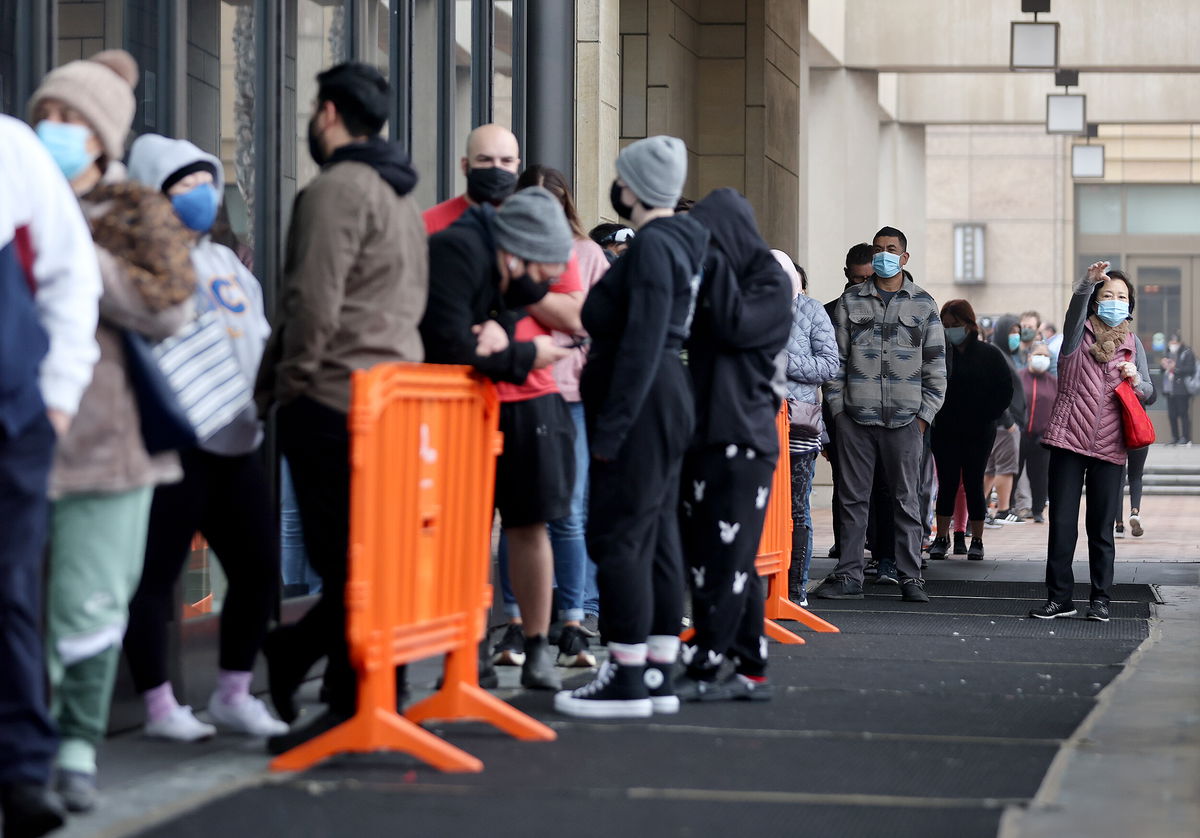Omicron may be mild, but it’s still adding to many Americans’ financial stress

People wait in line to be tested for COVID-19 at Union Station on January 7
By Tami Luhby, CNN
While the Omicron variant of the coronavirus is not upending the nation’s economy like the virus did at the start of the pandemic, it has wreaked havoc on millions of Americans’ ability to work and pay their bills.
Nearly 9 million people said they were not working because they were sick with coronavirus symptoms or were caring for someone who was, according to the most recent US Census Bureau Household Pulse Survey, conducted between December 29 and January 10.
That’s the highest number since the Census began collecting data in the spring of 2020, though the figures may not be precisely comparable due to changes in the Pulse questionnaire.
The share of adults who said they were not working because of virus-related reasons nearly tripled to 3.5% from the early December survey, according to a Goldman Sachs analysis of the Census report.
The Omicron variant began its US surge in December, and the number of cases then skyrocketed during the first two weeks of the new year — largely corresponding to the Census’ latest survey. Though some states are still experiencing elevated case counts, the nationwide number is now down roughly 40% from the peak.
Among those calling out sick last month were essential employees, including those who work in child care. That caused major issues for many parents.
“There could be disruptions to their ability to continue to work,” said Claire Zippel, senior research analyst at the left-leaning Center on Budget and Policy Priorities, which has been tracking the Census surveys. “A lot of low-paid workers lack access to paid leave. If they have to stay home from work because their child care is closed, that’s money out of their budget.”
More than 9 million adults, or nearly 38% of respondents, lived in households where children under 5 were unable to attend day care or another child care arrangement in the prior four weeks, according to the January Census survey. That’s the highest share since the Census started asking the question in late July.
And it’s a big jump from the 7.2 million, or 29.5% of respondents, who were in the same situation in December.
New Jersey, Rhode Island, New Mexico and Virginia topped the charts with more than half of adults there living in households with child care disruptions, according to Census data. At the other end of the scale, fewer than 1 in 5 adults in Utah and Louisiana reported issues.
Impact on wallets
Omicron also has added to the financial stress many families are experiencing.
More than 31% of adults said they were in households where it has been somewhat or very difficult to pay for usual expenses in the last seven days, according to the January Census survey.
That’s the highest share since late March, though the figure has been rising steadily since late August, just before pandemic unemployment benefits — including the $300 weekly federal boost — ended nationwide. Rising inflation has also been pushing up the cost of groceries, gas, home heating fuel and other necessities.
“Omicron is one more thing that’s coming in and squeezing families,” Zippel said.
Nearly 47% of Mississippi adults and nearly 41% of West Virginia adults said they were in households that had trouble paying their usual expenses. By contrast, fewer than one quarter of adults in Minnesota and Washington were in the same predicament.
Meanwhile, families have been having a tougher time affording food too.
Just over 10% of adults were in households where either sometimes or often there was not enough to eat in the last seven days — the highest since early March, the latest Census survey found. This measure has also been ticking up since late August.
Mississippi led with nearly 20% of adults in households that faced food scarcity, while New York and West Virginia came in second and third, each with more than 15%. Maine and Vermont each had fewer than 6% of adults in this situation.
While the food hardship measure has increased for all households nationwide in recent months, it has risen faster for those without children, said Patrick Cooney, assistant director of policy impact at Poverty Solutions, an initiative of the University of Michigan. That indicates the enhanced child tax credit monthly payments, which ended in December, were helping families afford food.
“We’re still in a pandemic,” Cooney said. “It seems like there’s a strong case that we should be continuing these measures.”
The-CNN-Wire
™ & © 2022 Cable News Network, Inc., a WarnerMedia Company. All rights reserved.